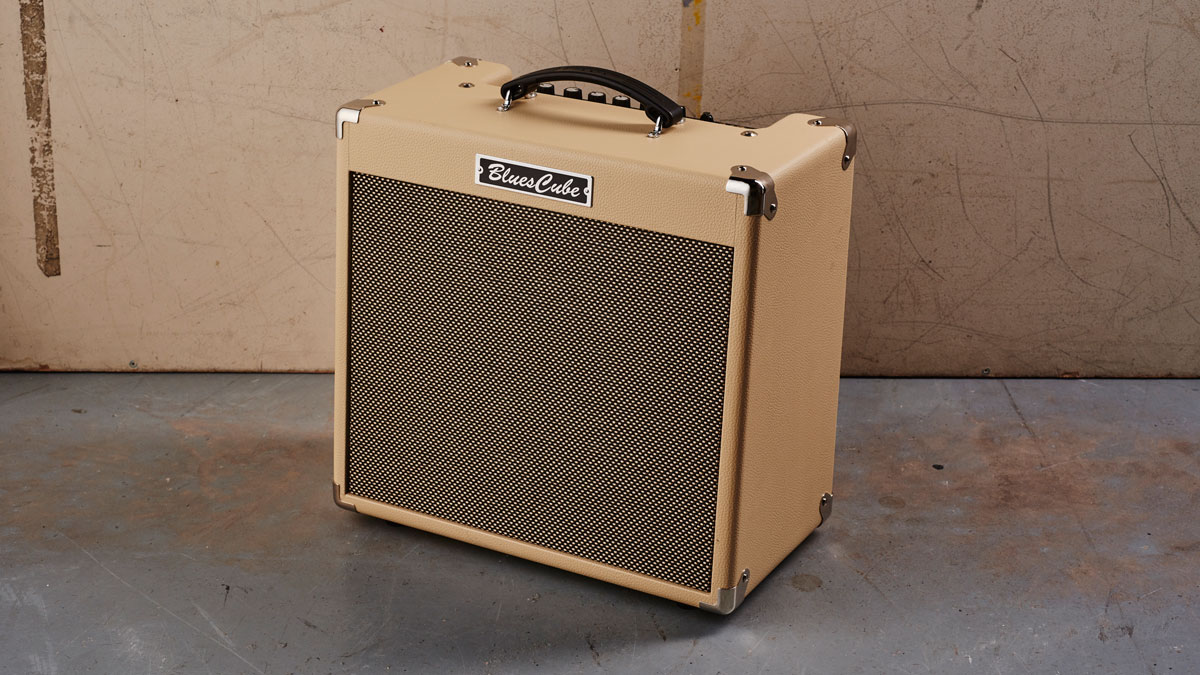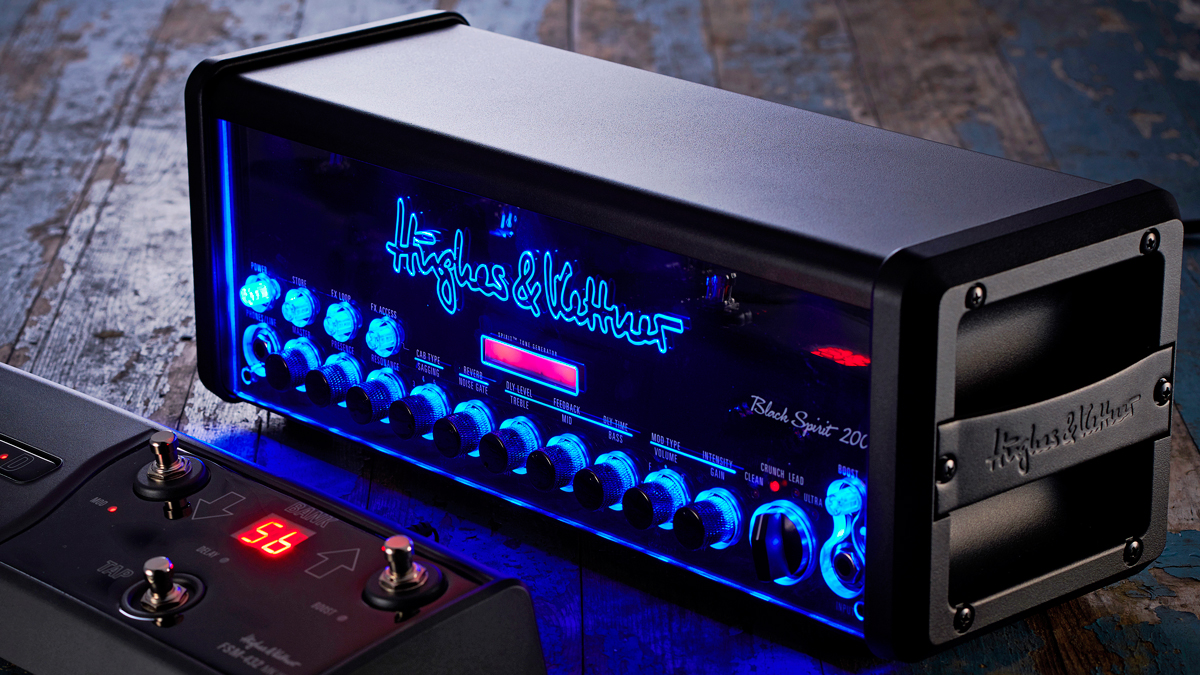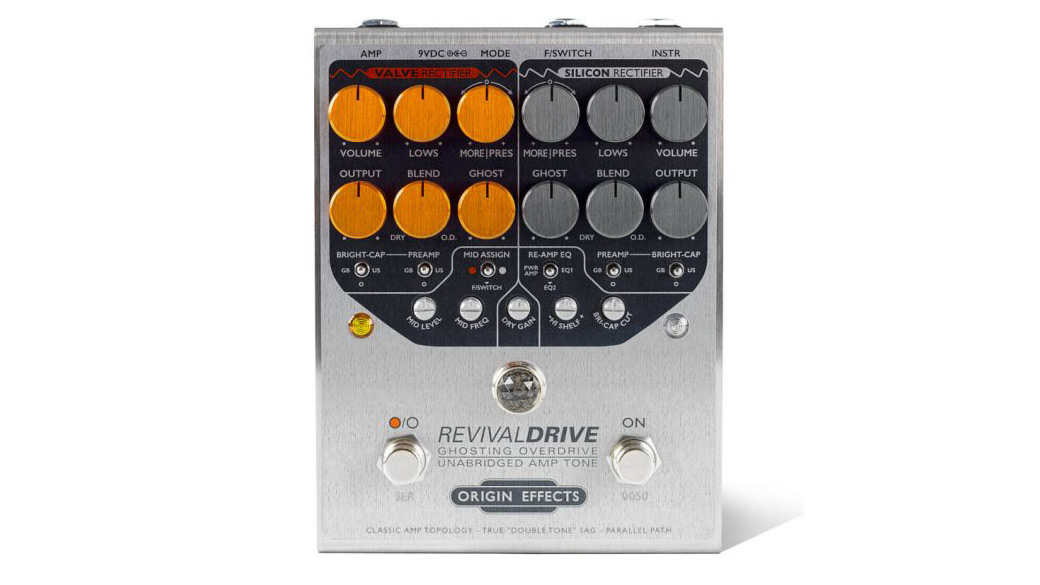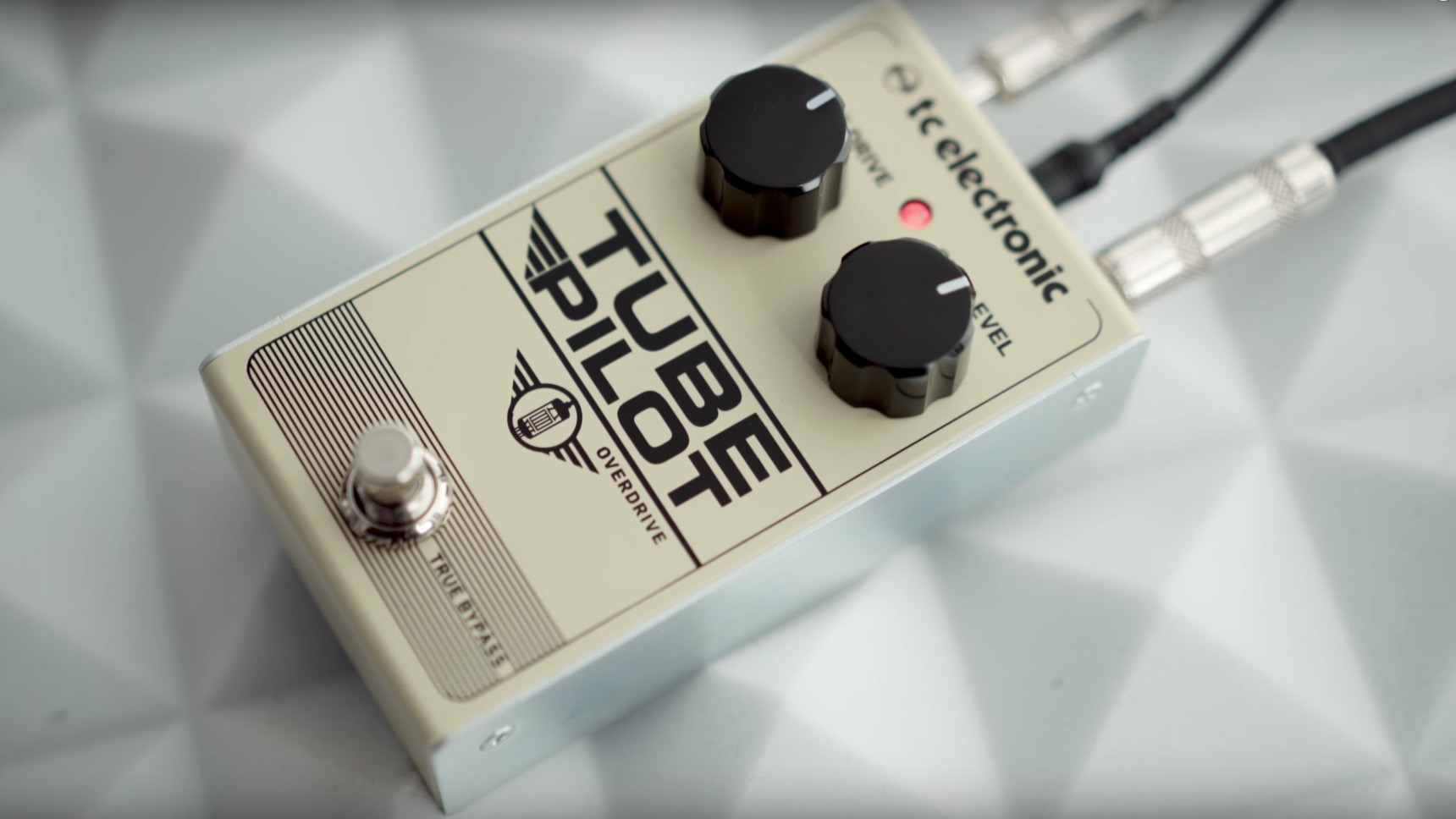Solid-state guitar amps are back - and here's why they're sounding better than ever
Plus, how to make your solid-state sing like a tube amp

It seems that in the guitar world, people either love or hate solid-state amps.
While tube amps have earned their favorable reputation for all of the positive buzzwords guitar players and engineers like to throw around - warm, fat, thick - it seems like solid-state guitar amps are on the opposite end of that spectrum. We’ve heard people describe them as everything from harsh, stiff, lifeless, and flat to downright boring!
The truth is that just because an amp is built around a tube design does not in itself make an amp sound good, and being of a solid-state design does not in itself make an amp sound bad.
The 'magic' in tube amps comes not from the whole, but from the sum of the parts
The 'magic' in tube amps comes not from the whole, but from the sum of the parts. Everything from the preamp to the power amp, number and type of gain stages, speaker, output transformer, and where the EQ sits in the circuit path all play their part. Tube amps also tend to have a softer attack and more sustain in the signal’s ADSR curve, which is why many find them to sound 'warmer'.
There are some absolutely stellar solid-state amplifiers on the market, as the technology has come a long way and continues to improve.
One of the biggest recent breakthroughs toward capturing that tube magic is Hughes & Kettner’s Spirit Technology. According to head of product development Bernd Schneider, the company “started tracking and replicating every single process in a tube circuit. We replicated exactly what goes on in a tube amp.”
It’s not just technology that’s changed, as player requirements have evolved along with it. Schneider says of the new breed of solid-state amps: “Sonic versatility is much more important today than it was decades ago. Players want an amp that can do it all - one-stop solutions on which you can play any kind of music at any volume level.”
Get the MusicRadar Newsletter
Want all the hottest music and gear news, reviews, deals, features and more, direct to your inbox? Sign up here.
Solid-state amps provide a lot of benefits for the gigging musician. They can push out a lot of sound in a fairly small format that can cut right through the mix and don’t have to be at ear-splitting volumes to get great tones.
Solid choice

Let’s break down some of the advantages of solid-state guitar amplifiers.
While it feels like just a few years ago the separation between the great solid-state amps and the not so great ones was significant, manufacturers continue to come up with innovations that push boundaries.
Many newer solid-state amps also provide novel, forward-thinking features like direct record outs (highly evolved from the simple line-out), multiple onboard tone options and amp types, different reverbs, a variety of impulse responses, and selectable power class types - just to name a few.
We’ve developed tube amps, hybrid amps, and digital amps. We put all this insight and knowledge together to try a fourth approach - and that is the Spirit Tone Generator
Bernd Schneider, Hughes & Kettner
Roland has always been one of the frontrunners with its venerable Jazz Chorus models, which remain staples on the stage and in the studio for professionals and amateurs alike.
When asked if having to provide so many options can limit an amp from specializing in certain areas, Roland commented, “We are always giving close attention to choose appropriate circuitry design to maximise the distinctive character of each amplifier.”
Hughes & Kettner’s Black Spirit 200 amplifier is the embodiment of this approach. According to Schneider, “We’ve developed tube amps, hybrid amps, and digital amps. We put all this insight and knowledge together to try a fourth approach - and that is the Spirit Tone Generator.”
Roland’s new Tube Logic technology has blurred the lines even further between the differences of tube and transistor designs. Featured in their new Blues Cube amps, it is designed around the iconic Tweed circuit. According to Roland, the company “precisely researched each component - including aging of parts which affect tone or feeling. We thoroughly analyzed dynamic and complex interaction between power supply, circuit, speaker, and cabinet.”

This breakthrough combines the articulation, power sag, and harmonic characteristics that players love in tubes with the portability and ease of solid-state. On the topic of the biggest obstacle in obtaining authentic valve sound, Roland says, “We developed unique a discrete analog circuit that has the same operating principle as a tube amp circuit.”
The most critical area where tube amps have the advantage is in the power section. Think about most - if not all - of your favorite guitar tones, at least from the '60s up to the early-'80s. Many of these tones come from really pushing a tube power amp.
Power amp sag was previously one of the hardest aspects to emulate, and is now one of the premier features in the new generation of solid-state amps. On how Spirit Technology accomplishes realistic power sag characteristics Schneider says “We wanted to tie in all of that power amp interactivity.”
Being able to dial in the amount of power sag is also useful when going for tighter, compressed, more modern tones as the power amp signature is less a vital part of that sound.
Versus valves
In the interest of equal time, let’s break down some of the advantages of tube guitar amplifiers:
If you drive a solid-state amp too hard it’s going to clip (in a bad way) and give you the kind of harsh, fizzy breakup that gave them a bad reputation in the first place - like running over a beehive with a lawnmower.
Schneider says, “In a tube amp you have feedback and interactive processes, and by feedback I mean speakers that send internal feedback to the power amp.”
This is generally not an issue with higher wattage solid-state amps as they have more headroom, but keep this in mind if you’re using something that is a lower wattage.
If your rig incorporates an older solid-state amplifier, or even if you have a newer model with some of the features previously mentioned and it’s still not quite getting your tone to where you would like it to be there are things you can do to help give your amp the tone and response of the best tube amplifiers.
Let’s examine some of the factors that have given tube amps their positive reputation and how you can use some of these ideas to augment your solid-state rig.
Compression

Tubes provide a soft clipping/compression and saturation that is very pleasing to the ear. This helps to smooth out peaks, which is why older solid-state amps can sound so transient. While subtle, these kinds of characteristics are fairly noticeable when taken away, which is why a lot of people think solid-state amps don’t sound as good.
Newer solid-state technology is designed to mimic the soft clipping aspects of tube amps more closely, but still not enough to some people’s tastes. Some light, transparent compression can go a long way, and optical compressor pedals are the perfect tool.
These tend to be more subtle than other types of compressors so as to not squash the signal too much. It’s not exactly the same kind of compression, but it will help to soften the attack and even out some of the transients.
Additional EQ
Adding some augmentative EQ is another option. If your tone needs more 'warmth', trying bumping up the bass and low-mid frequencies, and if it needs more punch, bump up the high-mids.
A dedicated EQ pedal is best for this as it offers control over multiple bands. If running the EQ in front of your amp is a little too in-your-face for your tastes, you can try running it in the effects loop.
Amp-in-a-box pedals

Guitar pedals that emulate different types of amplifiers are everywhere now. Most solid-state amps are known to provide a great clean platform for pedals, so consider looking into a dedicated amp-in-a-box.
Place it directly before your amp’s input and leave it 'always-on' to transform your amp. These overdrive pedals usually offer a solid tone section with controls over at least the lows, mids, and highs.
Speaker swap
Speakers have an immense impact on your tone, so a simple speaker swap might be all you need to improve your sound. Some break up faster, some are more compressed and different speakers react in different ways - and it's a relatively easy upgrade.
Tube pedals
A number of different kinds of pedals integrate tube circuitry into their design - everything from overdrives and compressors to preamps. But just because a pedal includes a tube doesn’t necessarily mean you’ll get that magic, because not all tube pedals are created equal.
The tube can be used as a clipping diode, or signal can be run through it after it’s already been distorted with discrete components. A starved plate design uses small voltage to distort the tube, while the nicer pedals run the tube at voltages similar to a tube amp.
Others have multiple tube gain stages with each stage overdriving the one after it, and some even achieve distortion by driving a single tube stage really hard! Confusing?

Each has its own sound, with pros and cons. Full-voltage designs seem to have the characteristic breakup that people love about tube amps while starved-plate designs are cheaper to manufacture and can add unpleasant distortion, defeating the purpose of going this route in the first place.
Pedals designed around FET or CMOS circuitry can do just as convincing a job at producing beloved tube-like harmonics and soft compression. Remember, the magic of a tube amp is in much more than just the tubes - it’s a combination of things like the phase inverter, the transformer, the speaker, and more.
Some things to keep in mind are that this idea is generally better if you prefer pushing a preamp over pushing a power amp. You’re still using the solid-state power amp of your amp.
It also depends on what kind of overdrive you prefer. If you get most of your gain from the amp, using a tube overdrive might be too compressed. If you use an overdrive pedal as a 'second channel' into a clean-ish amp, a tube overdrive can be more amp-like than a solid-state pedal.
Let’s break-up
To simulate the natural break-up of a tube amp, try this: run something like a transparent overdrive or slightly dirty boost right before your amp, after all of the other pedals in your chain.
It’s clear that there's no longer simply a tube vs solid-state debate
Set the pedal so that there is a slight breakup when you hit the strings hard, but still produces a fairly clean sound when you pick or strum normally. Set the bass EQ a little higher than you normally would, and the treble EQ a little lower. How well this works depends on the pedal that you choose, but sounds great with transparent-style overdrives.
It’s clear that there's no longer simply a tube vs solid-state debate. With technology constantly evolving to meet players’ demands, manufacturers continue to create innovations that push sonic boundaries. It will be fascinating to see what new ideas manufacturers build into their amps.
It all really comes down to finding an amp to match your sound. Remember, it's misguided to buy an amp based just on the technology behind it - always listen first!
“I’m beyond excited to introduce the next evolution of the MT15”: PRS announces refresh of tube amp lineup with the all-new Archon Classic and a high-gain power-up for the Mark Tremonti lunchbox head
“Its mission is simple: unleash the power of any amplifier or line-level source without compromise”: Two Notes promises a “watershed” in tube amp control with the Torpedo Reload II









